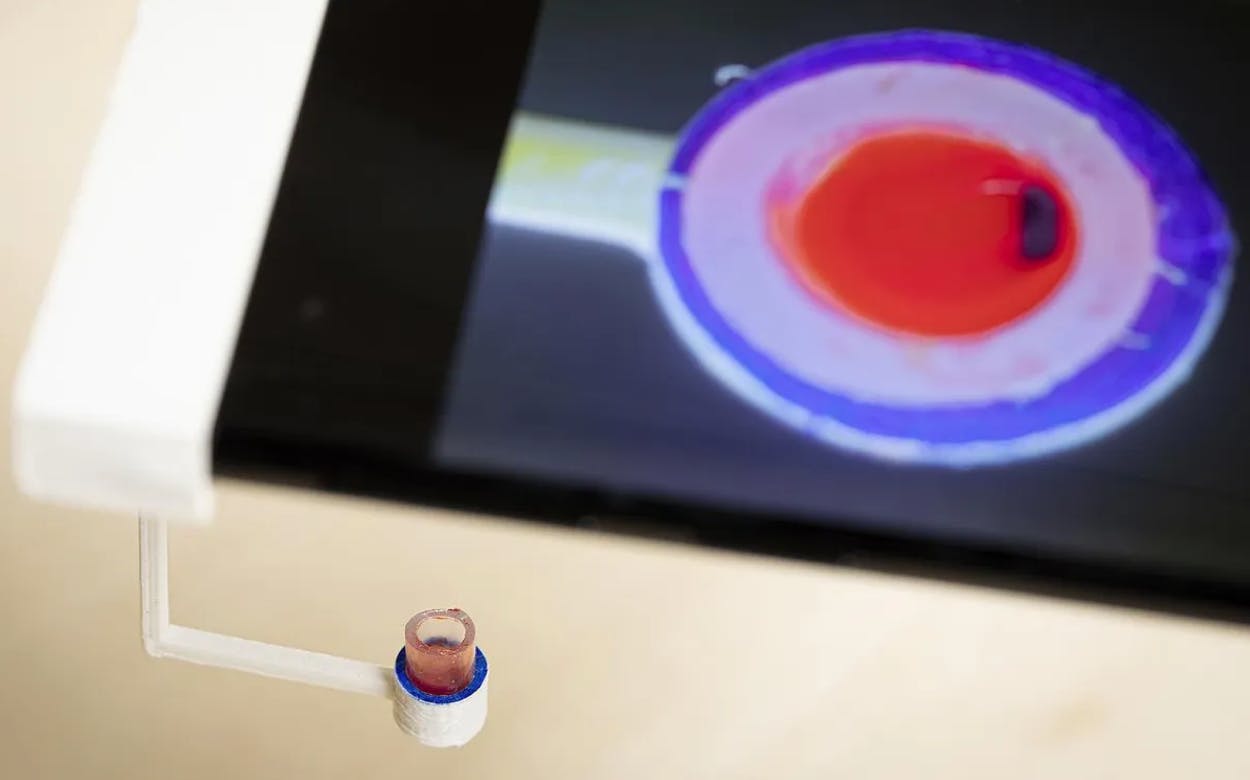A drop of blood and a cellphone are all you need for this new blood clotting test

Researchers at the University of Washington have developed and are testing a new micro-mechanical blood clotting test. This diagnostic platform only requires a drop of blood and a smartphone for analysis.
The original study, published in Nature, reported the testing of a proof-of-concept blood clotting diagnosis system, which used a smartphone’s camera and vibration motor to track a copper particle’s micro-mechanical movement.
The team is now conducting at-home tests based on the conditions of the study, which was performed in a medical facility.
The cultural landscape of at-home blood testing: Theranos and the pandemic era
Let’s address the elephant in the room.
The collective memory of discredited “single drop” blood testing company Theranos risks clouding this achievement, especially as founder Elizabeth Holmes’s 11-year prison sentence makes headlines.
Though the viability of the platform examined in this study is still a few years away, it’s safe to assume that the cultural taboo of the “single drop” blood test could make consumers and investors wary when the time comes.
With this context, it’s understandable why study co-author Shyamnath Gollakota is careful with his claims about the technology, asserting, “We are not trying to say we can do miracles from a single drop of blood.”
However, the COVID-19 pandemic’s influence might work to counterbalance this negative association.
The pandemic norm of relying on effective, efficient at-home diagnostic testing further accentuated the clinical need Theranos exploited. People have come to accept and even expect access to minimally-invasive and comfortable testing.
Gollakota agreed. “With COVID tests there were a lot of things we ended up doing ourselves and people are used to it in the home scenario now,” he said. “So I don’t think it’s completely far-fetched to expect people to be able to do testing themselves with multipart tests. But I also think the idea of going forward is to roll the whole thing into one simple attachment.”
Smartphone use in medical diagnostics
In an interview with IEEE Spectrum, General Catalyst’s Ron Paulus observed that this advancement relates to three ongoing trends in this field:
- The ability to interface with lab infrastructure for actions like ordering and scheduling tests, as well as receiving results without the need for a human middleman.
- The phone acting as a convenient power source for a separate plug-in or a bridge to a wireless module hosting the analytical technology.
- A combination of the above trends, using the phone as both the power source and the analytical platform.
However, like with this test, Paulus agreed that most smartphone-enabled medical diagnostic devices aren’t quite ready to be shared with consumers.
“We’re getting closer, but we’re still not there,” he said. “People can’t go through an eight-step process that requires any kind of technology expertise. It has to be made so any normal, regular person can just do it and can’t really make an error, and it has to be a reliable test.”
Next steps for at-home diagnostics
Beyond the smartphone-enabled technologies still being developed, the at-home medical diagnostics industry is booming. Big pharmaceutical players and commercial startups are developing and selling consumer-friendly, at-home alternatives to lab tests for many different applications.
There’s the growing market for at-home COVID antigen testing, as led by large pharmaceutical companies. And then, there are the up-and-coming commercial startups with more niche testing goals—like Evvy, which offers a vaginal microbiome test mailed to the customer’s door.
When it comes to at-home anticoagulation tests, Gollakota and colleagues are optimistic about their eventual commercial viability due to the amazing evolution smartphones continue to undergo—making them an excellent technological partner for diagnostic platforms like theirs.
“The devices that exist in hospitals to test for this haven’t changed much for 20 or 30 years,” Gollakota said. “But smartphones have been changing a lot. They have vibration motors, they have a camera, and these sensors exist on almost any smartphone.”
Paulus was similarly optimistic, saying: “There is no reason why in three to seven years, people should have to go out for a routine test, the kind of things people go to urgent care for. There is going to be a relentless push into this democratization.”
For patients on lifelong anticoagulants, frequent prothrombin time (PT) and international normalized ratio (INR) testing are essential. If this kind of at-home blood clotting test becomes available to them, it could make managing this chronic condition that much easier.
We hope further advancements—and peer-reviewed, evidence-based validation of the data—make this future a reality for these patients soon.